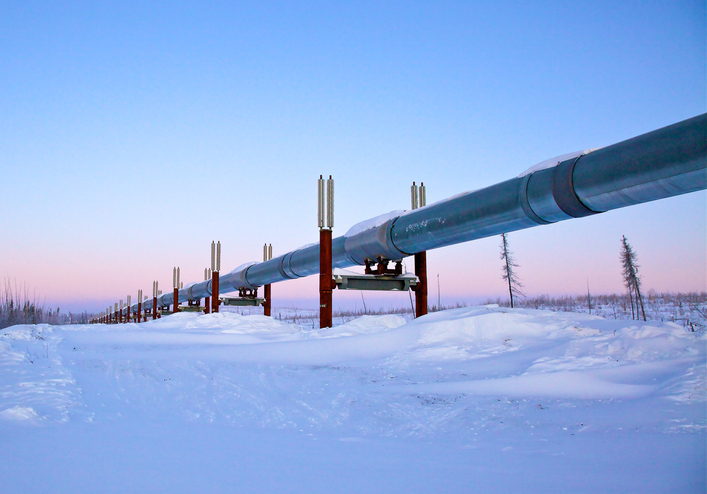The U.S. Department of Interior (DOI) released its plan to open a small portion of the Arctic National Wildlife Refuge (ANWR) to oil and gas production.
DOI’s plan is to open 1,563,500 acres of ANWR’s 19.64 million acres, along its coastal plain, to oil and gas leasing and exploratory activity, with some restrictions to protect local wildlife.
The DOI announcement was not surprising, as President Trump had said he would push to open ANWR to energy development both when he ran for president and since being elected to the office. Congress granted the president’s wish, mandating ANWR be opened to oil and gas activity as part of the 2017 Tax Cuts and Jobs Act.
ANWR History Supports Production
As part of a compromise with Senate Republicans, President Jimmy Carter agreed to a provision allowing oil and gas development in ANWR as part of the 1980 Alaska National Interest Lands Conservation Act, which locked up more than 104 million acres of Alaska as national parks, wildlife refuges, and wilderness areas.
The U.S. Geological Survey estimated in 1998 there was between 5.7 billion barrels and 16 billion barrels of technically recoverable oil along the coastal plain of ANWR.
Despite the commitment made in the bill to allow Alaskans to benefit from fossil fuel development in a limited portion of ANWR, subsequent Congresses and presidents agreed with environmental lobbying groups that allowing energy development could harm wildlife, and they blocked oil and gas development there.
In its environmental impact statement, DOI said if appropriate safeguards for development are followed and post-use restoration requirements are met, oil and gas development can be conducted with minimal impact on the environment, although it states if oil and gas production takes place it will likely result in some temporary and permanent negative impacts on portions of ANWR’s land, waters, and wildlife.
Following the Law
DOI’s decision to open ANWR up for oil and gas leasing and development was made not to advance a political agenda before the 2020 election, but to follow the law Congress passed in 2017, said U.S. Secretary of Interior David Bernhardt in an August 18 conference call with reporters announcing the ANWR plan.
“Congress signed legislation that is clear in their direction and expectation to us,” said Bernhardt. “And I am very confident that I will move forward expeditiously, and I’m not really driven by the political dynamics. I wanted to ensure that I deliberated carefully on what I included in the [record of decision].
“Here’s the reality: Congress has mandated these lease sales, and so they have to go forward in some regard,” Bernhardt said. “They can’t simply [be] unduly delayed. Absent a change in the law, the question of whether or not there will be a program in ANWR has really been answered. The issue now is, how do we go about it?”
Energy Production ‘Closer to Reality’
The battle to allow oil and gas lease sales in ANWR was hard-fought, and having been won, will pay dividends for America, said Rep. Rob Bishop (R-UT), ranking member of the House Resources Committee, in an August 17 statement.
“After decades of work from the Alaska delegation and leadership from President Trump, Congress mandated these lease sales to deliver energy to the nation and revenue to the Treasury,” Bishop said. “I thank Secretary Bernhardt and many others at the Department of the Interior for their tireless efforts to move this vision another step closer to reality.”
Allowing oil and gas production in ANWR will benefit the nation and ultimately the world, says H. Sterling Burnett, Ph.D., a senior fellow with The Heartland Institute.
“The Trump administration is finally making good on the promise made by President Jimmy Carter to the people of Alaska to allow a small part of its coastal plain to be developed with appropriate environmental safeguards using the best available technologies; a promise that subsequent Congresses and presidential administrations repeatedly broke,” Burnett said. “By keeping this 40-year-old commitment, President Trump is benefitting the nation and the world.
“Oil and gas prices won’t always be so low and resources so abundant as the presently are,” said Burnett. “As the world economy picks up steam in the post-coronavirus recovery, oil and gas will remain the lifeblood of economic progress, and the resources contained in the small portion of ANWR being opened up will help keep America energy-independent and provide energy for developing countries to prosper.”
Corona Recovery Requires Affordable Energy
The ANWR decision should help with the post-coronavirus economic recovery, said Tim Benson, a policy analyst with The Heartland Institute, in a news release
“At a time of massive financial insecurity and economic dislocation due to the worldwide COVID-19 pandemic, it’s heartening to know that the Trump administration is taking steps in a safe and environmentally friendly manner to ensure that Americans will continue to have plenty of access to abundant and cheap sources of energy,” Benson said. “Affordable energy is the key to productivity growth and the production of virtually all goods and services.
“For American families, spending less money on energy means saving more money to pay mortgages, rents, car payments, food and clothing, retirement funds, student loans, etc.,” said Benson. “There’s no reason this shouldn’t have been done 40 years ago, but better late than never.”
Jim Lakely (jlakely@heartland.org) is the vice president and director of communications of The Heartland Institute.
